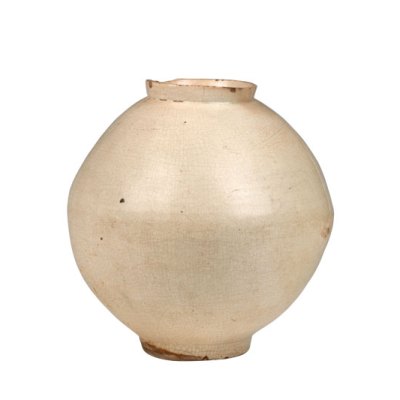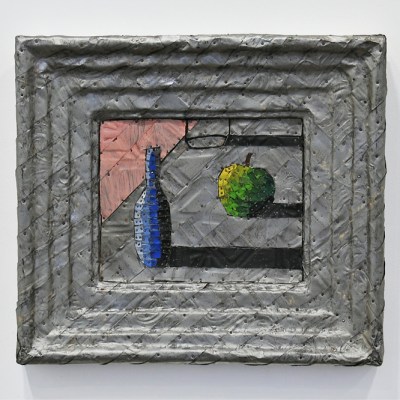From the February 2021 issue of Apollo. Preview and subscribe here.
Late one evening last October, I landed at Incheon International Airport in South Korea, the first step in a move to the country with my wife for her job. After passing through a formidable series of checkpoints staffed by masked officials, I was whisked into Seoul by a special taxi reserved for arrivals who are destined for quarantine.
With the exception of a one-hour reprieve to take a coronavirus test, I spent the next 14 days in a hotel room with views of the 14th-century Gyeongbokgung Palace and – I realised after a few days – the National Museum of Modern and Contemporary Art’s (MMCA) branch in Seoul. The sleek structure glowed at night in the distance, and came to have something of the same significance, for me, as the green light on that East Egg dock had for Gatsby. (That, at least, was my thought at certain fanciful moments while alone and jetlagged.)
As the clock clicked to noon on a November weekday, releasing me, my first stop was the museum. Mercifully, it had reopened after a coronavirus spike. (Daily national cases hovered in the low hundreds – impressive in a country of some 50 million and considerably better than the disastrous United States I had left.)
Strict limits on visitor numbers were in effect, making the MMCA’s sprawling galleries seem especially spacious. In a soaring atrium hall, I was briefly alone with Haegue Yang’s Silo of Silence – Clicked Core (2017), a roughly 36-foot-tall mobile, hanging from the ceiling, of black and blue venetian blinds and bright fluorescent lights. Standing inside the slowly rotating cylinder feels like being in a slow-motion, digitally rendered tornado. It is at once exhilarating and startling, as your vision is overwhelmed and illuminated and obscured.
The silo is the grand opener to ‘O2 & H2O’ (until 28 February), a precise survey of Yang’s rapturously inventive art with a phalanx of the mysterious totem-like forms that she festoons with bells and sets on wheels, futuristic instruments awaiting some incredible party.
However, the highlight of the affair is an exhibition within an exhibition in a tiny gallery, painted black, with vitrines holding 108 wooden spoons – though that’s an inadequate word for the works of the carpenter presented in ‘Mok Woo Workshop, 108 Wooden Spoons’. These are unbelievable spoons. Unusual curves form their bowls and handles, and some resemble slithering snakes. There are sumptuous, smooth spoons, and ones with craggily edges. A few are so full of life that they could be an undiscovered species of animal.
Installation view of ‘Mok Woo Workshop, 108 Wooden Spoons’ at the National Museum of Modern and Contemporary Art (MMCA), Seoul Photo by Cheolki Hong; © MMCA

Woohee Kim, who works in Masan, along Korea’s southern coast, has been a longtime friend of Yang’s family but his spoons only recently caught the artist’s attention, she explains in an accompanying text. ‘I was drawn to the symbolic power of spoons. They touch my heart for being closely correlated with the ways in which we make a living.’
In writings of his own, Kim tells stories about his practice. There was a neighbour whose fence he had helped weld who offered him Korean hornbeams to use. A series of spoons that he whittled from an elm are ‘inclined to stand and refuse to sit down. They pay little mind to my pleas for their obedience’. And while he used to fill in holes that appeared in his wood, some of which were made by insects, he now finds himself leaving them and even making holes of his own.
Both Kim’s writing and objects speak candidly about the strange process of making things: how an artwork can take a path all its own, escaping its maker’s intentions; how artists work within communities; and how aesthetic objects can provide solace. ‘When things aren’t going well for me,’ he writes, ‘I grab a piece of wood from off the floor and just take all my time carving a spoon.’ It can take time, but the process always soothes him: ‘Finally, I feel that my windpipe is open.’
Such forms of consolation became essential in Seoul in December. Coronavirus infections crept up, museums closed again and public gatherings were strictly curtailed. Long-awaited displays shuttered, including a just-opened retrospective at the MMCA Seoul for the 88-year-old avant-garde pioneer Lee Seung-taek, who floated burning canvases on the Han River in 1964. His installation Wind (1970), a long string with strips of blue fabrics, hung outside two of the MMCA’s buildings, fluttering resiliently against the wind. And, at the National Palace Museum, there is a Korean folding-screen painting of peaches, cranes, and the sea that dates back at least a century, on loan from the Dayton Art Institute in Ohio. Miscategorised as Chinese for decades, it was correctly identified in only 2017, and has been freshly restored. After waiting so long to be properly appreciated, it is destined to wait longer.
The Seoul branch of the MMCA. Photo by Myung Yishik; courtesy MMCA

As I write in early January, with tentative signs that the latest outbreak is slowly fading, the immediate outlook for the art scene is very foggy. There is no clear sense of when restrictions will be eased. Some galleries are cautiously welcoming guests by appointment only, with mandatory contact-tracing systems in place.
Art takes on new valences in such an environment. A handsome demountable house by Jean Prouvé, from 1944, inside the Page Gallery’s ‘Everywhere & Here’ exhibition brings to mind the quick-to-assemble testing tents and hospitals that have sprung up around the world. (If only Richard Pettibone’s miniature paintings could adorn such architecture, as they do here.) In a monographic show at Leeahn Gallery, Nam June Paik’s ingenious assemblages of analogue televisions – forming in one piece the eyes and mouth of a head – have an extra bite, given that we have spent apparently every moment these past 10 months in front of screens.
Also in the show are Paik prints from 1989, of a television robot-body on which the artist scrawled a few of his inimitable aphorisms. ‘TV has attacked us for all our lives,’ one reads. ‘Now we are hitting back. There is no rewind button on the Betamax of life. An important thing happens only once.’ Let’s hope.
From the February 2021 issue of Apollo. Preview and subscribe here.


